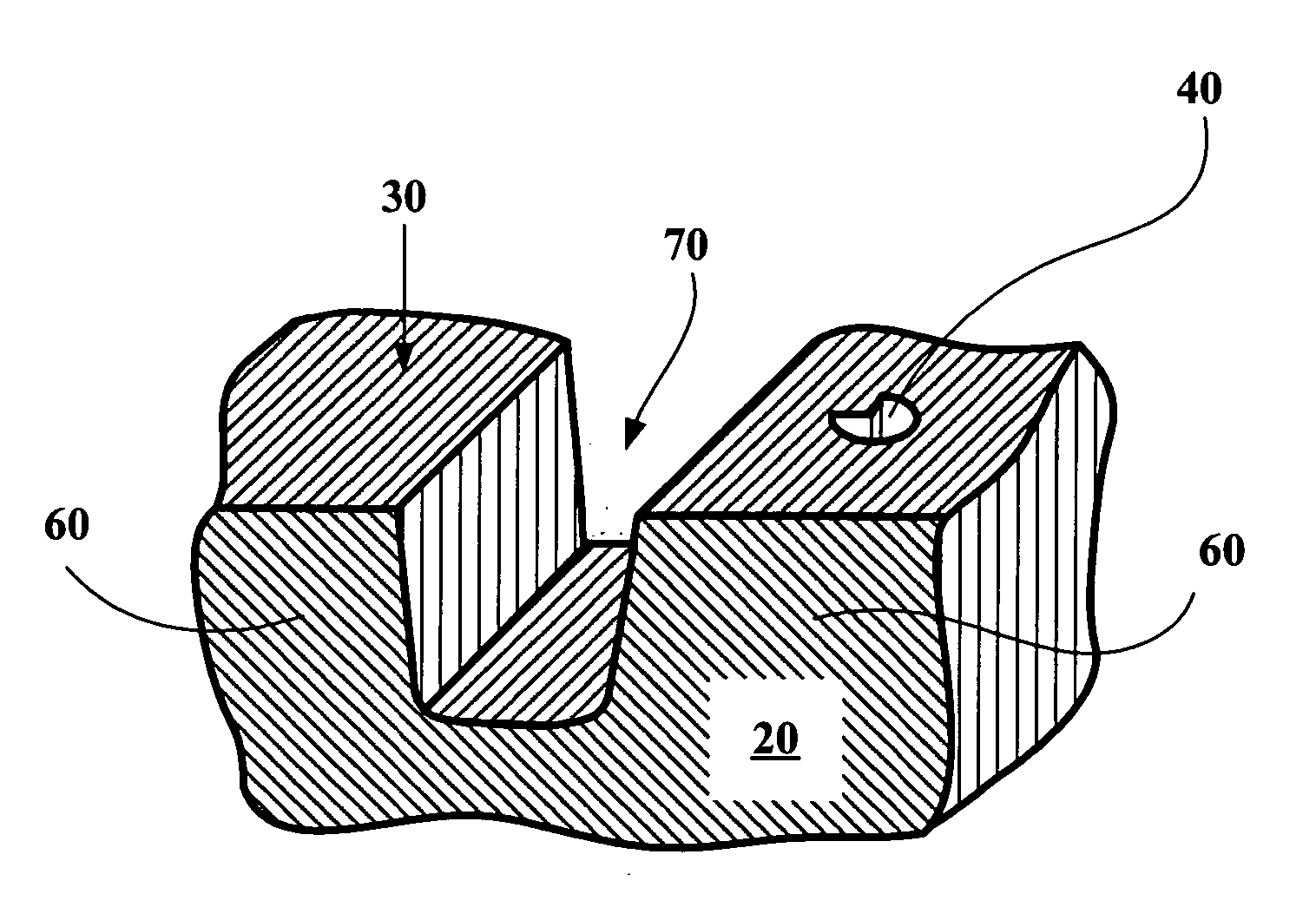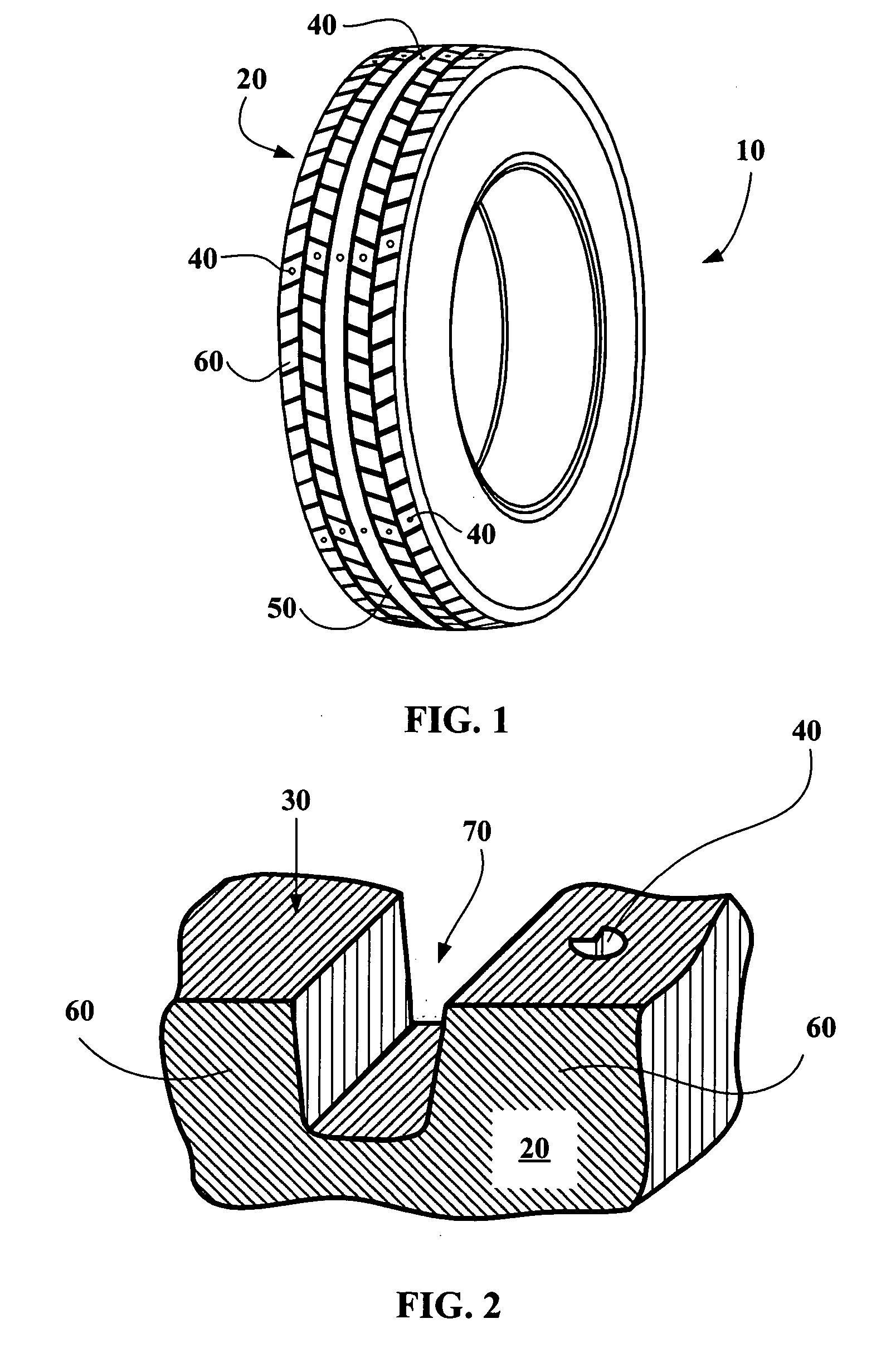Wear indicator for a tire
a technology of wear indicators and tires, applied in the direction of tires, vehicle components, non-skid devices, etc., can solve the problems of 25%, tire tread wear, tire tread wear, etc., and achieve the effect of small area
- Summary
- Abstract
- Description
- Claims
- Application Information
AI Technical Summary
Benefits of technology
Problems solved by technology
Method used
Image
Examples
Embodiment Construction
[0045]FIG. 1 is a schematic perspective view of a tire 10 whose tread 20 has a plurality of cavities 40 that serve as wear indicators. The cavities 40 are arranged across the full width of the rolling surface, both in the central rib 50 and in the tread elements 60 of the tread 20. It can also be seen that cavities 40 are arranged at several positions around the circumference of the tire.
[0046]FIG. 2 is a schematic perspective view of part of a tread 20 according to the invention. The figure shows two tread elements 60 separated by a groove 70; on one tread element 60 a cavity 40 is provided in the rolling surface 30. The cavity 40 is of the same type as that represented in FIG. 6. In the example shown, the geometrical shape of the trace of the cavity 40 on the rolling surface 30 corresponds to a disc sector with an opening angle of 270°, corresponding to a tread wear level of 25%.
[0047]FIG. 3 is a schematic representation of the trace of a wear indicator according to the inventio...
PUM
 Login to View More
Login to View More Abstract
Description
Claims
Application Information
 Login to View More
Login to View More - R&D
- Intellectual Property
- Life Sciences
- Materials
- Tech Scout
- Unparalleled Data Quality
- Higher Quality Content
- 60% Fewer Hallucinations
Browse by: Latest US Patents, China's latest patents, Technical Efficacy Thesaurus, Application Domain, Technology Topic, Popular Technical Reports.
© 2025 PatSnap. All rights reserved.Legal|Privacy policy|Modern Slavery Act Transparency Statement|Sitemap|About US| Contact US: help@patsnap.com



